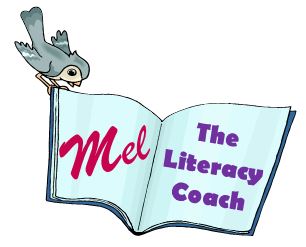Today, I want to tell you about three classes.
Class A: The chatty class
These students like to have a chat. They are a bit noisy when they enter the classroom and there is quite a bit of banter going on during teacher instruction, group activities take a little longer than you might like because these kids are talking too much. However, the teacher is happy, because, while sometimes annoying, these students are engaged in the learning experiences in class. That’s good. It’s not great, but it’s good.
Class B: The Off-task Crazy Class
These students drive every teacher nuts! They are disengaged in the work and it’s hard work to get them to focus. The teacher feels overwhelmed by specific students and the general immaturity of the class. He/ She is constantly dealing with behaviour and struggling! This class is hard! This teacher needs help!
Class C: The Zombie Class
These kids are a bit strange. Their teacher is often frustrated and the students are often wondering why. This class appears to be perfect. The students enter the classroom quietly (or close to it) and they settle quickly when the teacher begins instruction. You can hear a pin drop when the teacher speaks. Everyone is sitting in their assigned seat, facing the teacher and even have their books open to a clean page. Some students are even copying everything that is written on the board or projected on the screen. Sounds like a dream class, right? WRONG!! Appearances can be deceiving! When it comes to listening and learning, this class just isn’t there. They are quiet, because they are busy dreaming about their weekend. When there is an activity, they don’t know what to do and they achieve very little. The teacher goes home tired and frustrated! The students go home confused and questioning why the teacher is so unhappy with them when they weren’t talking out of turn and they got all the notes copied down.
Which class would you rather have?
While behaviour management strategies are necessary for ensuring students are on task, it is also vital that you work on ways to engage students in your class. Participation needs to be an expectation of the classroom (every classroom) for students to learn.
Students need to be present, interested and feel capable of success in order to engage in a lesson. At my school, attendance is a huge part of engaging students. The students who are chronically absent, will obviously have difficulty engaging with class work when they are actually in the classroom. Making the topic interesting is not always the easiest task for a teacher, however the way we teach the (not-so-stellar) content can generate more interest. Students believing they can succeed is more complex than it seems, there are years of successes and failures as well as learned behaviours that every student brings with them into the classroom and these will inevitably impact upon student confidence.
How do we Engage Our Students?
Especially. how do we get the Zombie Class to wake up and learn?
In order to engage our students we need to address all three aspects of classroom engagement.
Students must be PRESENT
Unfortunately this one mostly relies on the student and the parent/s to ensure a student is physically at school. However, a Zombie class can have full attendance and still be disengaged. When we say ‘PRESENT’ we don’t only refer to physical attendance but mental attendance/ focus on the lesson.
As teachers, we can contact parents when a student is often absent (or for more than a few days) and ask if everything is okay? We can also offer to send learning materials home via email or through a class mate, so that the student doesn’t fall behind. While the student may not do much with the materials you send home, as a teacher, you can know that you have done your best to help your student be ‘present’.
In terms of maximising ‘focus’ ensure that your students understand that your expectations go beyond a ‘quiet’ class or having the notes copied down correctly. Make participation a requirement. Instead of requiring that specific notes be copied into books, require the students to answer a question or complete an activity. Formulate the required activity so students won’t be able to complete it without listening and engaging with instruction/ learning. If a student is unable to complete the activity it shows you that either they didn’t understand the concept or they weren’t engaged. Either way, you need to spend time with them re-teaching the lesson content. So, ask the student to stay back after class for a conversation about that. As long as you are consistent with this, most students will quickly figure out that it is easier and more time efficient to just participate in the lesson in the first place.
Sometimes, the FOCUS of your students will be somewhere else. That’s understandable. Even as adults, there are times when we are distracted! Try to minimise distractions and remind the students that we sometimes need to hit pause on some things in life so we can focus on taking care of business. If a student is often distracted by life due to family/ financial/ relationship problems or none of your strategies seem to help, refer the student to counselling and support services in your school. Chronic disengagement is often a signal that something is up.
Students must be INSTERESTED
When was the last time you spent an hour reading about a topic you cared nothing about? When was the last time you watched a movie you hate? Have you ever spent the whole day at a museum or trade show that had nothing to do with you? Maybe you have watched that stupid movie recently or read about a topic you have no interest in or maybe you went to that silly trade show. I’m guessing that if you did, you had a compelling reason e.g. my husband loved it and wanted me to share the experience, or I was reading for my job, or my kid had a booth at the trade show. It may not have been your first choice, but you made the best of it, because it was important to you or someone you love. We can’t always twist our curriculum to be the favourite topic of every kid in our class. We CAN explain why the content we are teaching is important to the students. We CAN help them to understand how the knowledge and skills they are learning will help them get a job, get into university, pay their bills, manage their finances or conserve their environment. So, take the time to do that. It will save time in the long run, as students will know why they need to participate.
Students must be CONFIDENT they CAN
Sometimes, students disengage because they don’t understand the words we are using. They might have had a bad experience with algebra. They might have failed Science last year. There could be a million reasons for a student to think/ feel like they CAN’T learn what you are teaching them. The best way to combat this feeling, is to make your classroom a safe place for mistakes (easier said than done, I know!). You can also start new topics with a quick brainstorming activity that allows students to share what they already know about a topic. If they don’t know much, discuss why this might be and reassure students that by the end of the unit they will know much more! Ask questions and create activities that build confidence and allow students to experience success. Of course, there will be quizzes and questions and tasks that are more difficult and struggle is important to learning. You need to find a balance.
As the Aussie Teachers start a new school year this week, I am thinking of ways to engage my students from the start. In other countries, students have returned from Winter breaks and teachers might be worried about recapturing that beginning of the year excitement that students seem to have lost by now. If you are thinking about engagement, remember that it is more than getting the students in the classroom and it is more than a fancy lesson plan. Ensure that you are consistent with your expectations and students know that participating is easier than not!
Best of Everything.





